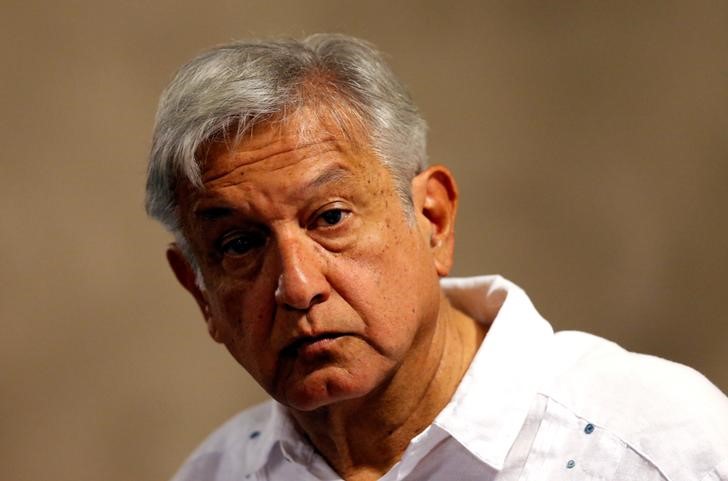
McConnell says Senate Republicans have not ruled out witnesses in Trump impeachment trial
By Doina Chiacu
WASHINGTON (Reuters) – Senate Majority Leader Mitch McConnell said on Monday that Republicans had not ruled out hearing witnesses in the impeachment trial of President Donald Trump, one of the main sticking points in drafting rules for the proceedings.
However, McConnell made clear he would not accede to a Democratic request for the U.S. Senate to agree ahead of time to take testimony during the trial.
The Republican leader instead repeated his position in an interview with Fox News Channel that any decision on witnesses be made after opening arguments in the case from both Democrats and representatives for Trump.
Allowing witness testimony, particularly from current and former administration officials, was likely to prolong the trial and could bring up new evidence damaging to Trump.
Republicans have a 53-seat majority in the Senate, where 51 votes are needed to pass a set of rules for the Trump trial.
The Republican president was impeached last week by the Democratic-led House of Representatives on two charges over his pressuring Ukraine to announce an investigation of former vice president Joe Biden and Biden’s son. Biden is a potential Democratic candidate to run against Republican Trump in the November 2020 election. Hunter Biden was on the board of a Ukrainian energy company.
Trump was charged with abuse of power and obstructing Congress’ investigation. He has said he did nothing wrong.
There is little chance Trump will be convicted and removed from office through a trial in the Republican-led Senate, but the impeachment proceedings could resonate at the ballot box in November.
Senate Democratic leader Chuck Schumer has requested to have four witnesses subpoenaed for the Senate trial expected to begin early next year. The White House blocked all four, including acting Chief of Staff Mick Mulvaney and former national security adviser John Bolton, from testifying during impeachment proceedings in the House of Representatives in December.
“We haven’t ruled out witnesses,” McConnell said in an interview with “Fox & Friends.” “We’ve said, ‘Let’s handle this case just like we did with President Clinton.’ Fair is fair.”
In that 1999 trial, he said, senators went through opening arguments, had a written question period and then decided what witnesses to call based on that.
McConnell and Schumer failed to reach an agreement on Thursday on rules for the trial, which McConnell said would be the Senate’s first order of business in the new year.
“We remain at an impasse on these logistics,” McConnell said on Thursday.
He used the word “impasse” again on Monday in saying senators could not take any action until House Speaker Nancy Pelosi formally transmits the articles of impeachment to the Senate. Pelosi has withheld them in a bid to pressure Senate Republicans to reach an accord with Schumer on trial rules.
Schumer and other Democrats have criticized McConnell for working closely with the White House on trial strategy, saying he was not acting like an impartial juror.
Senators are expected to be administered an oath promising to do “impartial justice according to the Constitution” at the start of any impeachment trial.
McConnell dismissed the criticism in the Fox interview, asking if any Democratic leaders were impartial.
“Let’s quit the charade,” McConnell said. “This is a political exercise. A political exercise.”
(Reporting by Doina Chiacu; Additional reporting by Richard Cowan; Editing by Tim Ahmann and Grant McCool)









